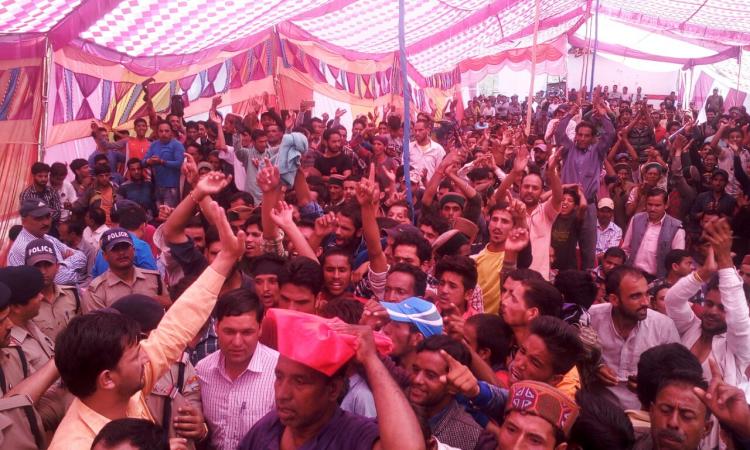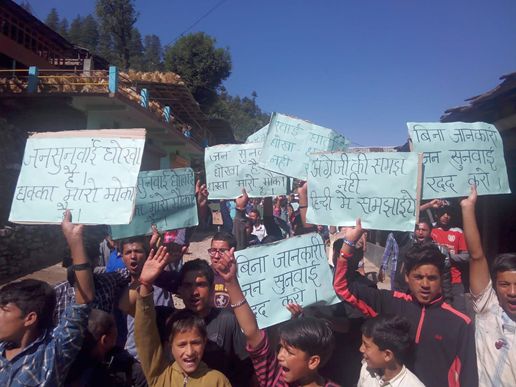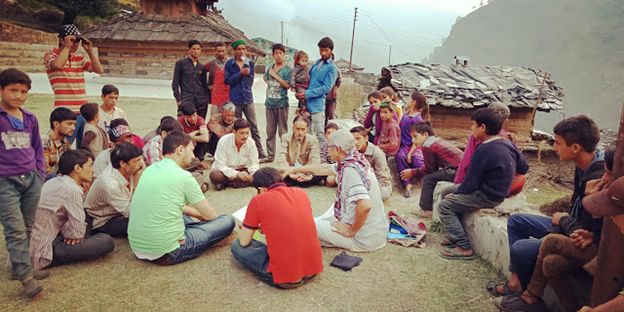
Supin, a tributary of river Tons and a part of river Yamuna gushes through the hilly tracts of Uttarkashi district. Like all rivers meandering through the lush terrains and forests of Uttarakhand, Supin too is being aggressively tapped for hydropower generation by the government.
Massive hydropower project construction continues in the fragile and ecologically sensitive mountainous belt of the Himalayas in Uttarakhand even after the massive disaster of 2013 following heavy rains and deluge claiming thousands of lives. The Jakhol Sankri hydropower project with a proposed capacity of 44 megawatts is one such project on the Supin river. Designed as a run-of-the-river project by the Sutlej Jal Vidyut Nigam, it was accorded an investment approval by the government for pre-construction activities in September 2017.
Ensure the voice of affected people are heard
The question is not whether we are for or against the dam. The point is, we have an elaborate environmental decision-making process under the Environment Impact Assessment (EIA) Notification, 2006 which takes cognisance of “the principle of sustainable development” and ensures that irreversible damage and degradation of the environment is not permitted. Also, considering the direct and immediate adverse consequences of land acquisition for development projects, many improvements in land acquisition policies have been made. But, all of this gets marred by poor implementation measures which fail to prevent or even mitigate the adverse impacts on displaced persons.
The Jakhol Sankri project is symptomatic of a faltering environmental governance mechanism. The rush to approve hydropower projects in the absence of designed safeguards is likely to have massive impacts on the Himalayan ecology and the people. Ineffective compensation measures and a lack of land for land compensation and livelihood alternatives have created resistance among communities affected by hydropower development.
Yet, the state continues its close alliance with the project investor and tries to push for the compulsory land acquisition process. The EIA is often farcical, forest clearances are granted without due diligence and public hearings are fixed by the project proponents and government. This adds to the dangers faced by the people and the environment.
What happened at Jakhol Sankri project’s public hearing?

A public hearing was scheduled for the Jakhol-Sankri hydroelectric project on June 12, 2018. The hearing was organised despite the flouting of various legal provisions and ethical codes of conduct, all reminiscent of the infamous Pancheshwar dam public hearing of August 2017. Legal documents, reports and other documents required for holding the public hearing were not publicly accessible. There was no information about the Environment Impact Assessment report, the Social Assessment Report and the Environment Management Plan. Without providing all information to the people regarding the impact of the project, merely asking about their concerns is a violation of the letter and spirit of the EIA Notification, 2006.
Mandatory forest rights committees not formed in the area
People in 42 villages in the area have been faced with relocation when the area was notified as the Govind Pashu Vihar sanctuary in 1955. The traditional rights of the people over the forest were violated. The government chose to build a dam at a place where even vehicle horn was not allowed in order to not disturb the wildlife.
In spite of the provisions of the Scheduled Tribes and Other Traditional Forest Dwellers (Recognition of Forest Rights) Act, 2006 (FRA), Uttarakhand remains mostly untouched by its legal provisions. In an act of open defiance of the law, the sub-district magistrate of the area sent letters asking all village heads to acquire signatures of their villagers to hasten the Jakhol Sankri hydroelectric project. The letter, instead of initiating steps to implement FRA or of seeking a record of people’s objections about the dam, ordered people to give their consent in a hurried manner. The people, are not fully aware of the rights given to them under this very important and historical legislation of FRA and have signed the documents.
People kept in the dark about impacts they face
The project-affected people have not been provided with any information on how much land they stand to lose. Officials from the Sutlej Jal Vidyut Nigam have been routinely visiting the village under the guise of ‘corporate social responsibility’. Along with distributing sewing machines to the villagers amongst other small benefits, the officials have been collecting signatures on blank sheets of paper. The trust that the villagers earlier had for the officials has been replaced by worry that their signatures will be used for illegal activities.
According to the EIA Notification 2006, at least a month before any public hearing, the report is to be kept in the district collectorate, district industries department, district panchayat office, and environment department and pollution control board for the public to read. This is to ensure that people make informed decisions during a public hearing. How can people take any decisions regarding the project if they haven’t read about the project and its effects on their lives and lands?
We found that the project-affected people had no clue about what a public hearing entails. They were largely unaware of the hearing’s purpose, processes and the paperwork. They are extremely vulnerable as a result. Even when the village heads are provided notices, most of the time they are unable to understand the message.
EIA Notification 2006 does not mandate that the government provide EIA report, Environment Management Plan and Social Impact Assessment report in the vernacular language to the people. Still, what stops them from doing so? Matu Jan Sanghatan, a Uttarakhand-based peoples organisation has been raising this demand for the last 15 years in different project areas even before public hearing were mandated by law. The government wants to keep people in the dark about the impacts as it fears that they will raise their voice if they understand the implications of the project.

Environmental public hearings are not like janta darbars, which is a public hearing of complaints against the government. The district collector or the elected representative listens to the people’s grievances and tries to resolve it. The environmental public hearing is a legal requirement and is the first and the last public platform where people can speak openly and the government has to listen. The government then sends the people’s concerns to the Expert Appraisal Committee of Ministry of Environment, Forest and Climate Change, which decides whether to grant an environmental clearance or not.
The current state of affairs has been presented in front of the state and the central government but they have paid no attention to it. Matu Jan Sangathan tried to convey the demands of the people to the Uttarkashi district collector and the Uttarakhand Environment Protection and Pollution Control Board. Letters were sent on May 23 and 26, 2018 prior to the public hearing:
- All affected villages and hamlets should be given the EIA, EMP and SIA report in Hindi. Officials should help the villagers understand the documents and the consequences of the dam.
- After it is carried out, a minimum of one month should be given before the public hearing is organised.
- The processes of the Forest Rights Act 2006 should be put into action in the affected areas immediately. They should receive forest rights immediately.
- The public hearing should be cancelled till further notice in the interest of the people.
From the district administration to the state and the central government, the people’s concerns are being viewed as anti-dam propaganda. The proposed project entails the construction of an eight-kilometre long tunnel. Nothing has been done to take stock of the impact of the tunnel on the dam-affected villages. Rivers are known to dry up due to changes in water flow caused by tunnels.
People voice their concerns
Pandemonium prevailed at the public hearing held on June 12, 2018 amidst tight police security. People stalled the proceedings for three hours raising slogans of “Cancel public hearing, dam company go back”. People vociferously demanded cancellation of the public hearing, alleging that they had not been consulted. The prevailing sentiment was that the government and the project proponent should have furnished access to project information.
The district collector was not allowed to finish the presentation and commence the proceedings. Project-affected people from villages like Jakhol, Dhara, Sankri, Pavtalla, Pavmalla etc., created a brouhaha by getting on to the stage. Sloganeering marred the hearing, forcing district authorities and the Uttarakhand Environment Protection and Pollution Control Board to conclude the public hearing abruptly and leave the venue.
In Chamoli district, Utarakhand on October 18, 2006 the public hearing of the Vishnugad-Peepalkoti hydropower project (444 MW) on Alakananda river was cancelled. So was the hearing of the Devsari hydropower project (252 MW) on Pinder river on July 22, 2010.
If the real public hearing had occurred, people could have raised their issues and had them dealt with, and public protests could have been avoided. People want the government to listen to their long-standing demands on forest rights and other development work first. The dam can wait.